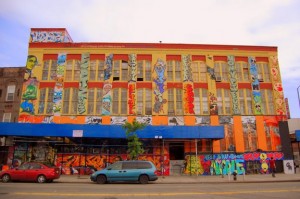 5 Pointz in Queens, NY is the mecca of graffiti. Coruscating murals decorate nearly every square inch of the building. Forget what the travel books say – this is definitely one of the top ten places to visit in NYC.
5 Pointz in Queens, NY is the mecca of graffiti. Coruscating murals decorate nearly every square inch of the building. Forget what the travel books say – this is definitely one of the top ten places to visit in NYC.
This independently owned building houses around 90 studios independent artists, several clothing factories, and a plethora of food carts. Artists from all over the world converge in this location to legally write on the outer fascade, which is run by graffiti writer and curator, Meres One. On Sunday, I had the opportunity to speak with him about his pet project.
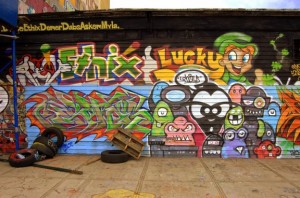 Tell us a little bit about the background of the 5 Pointz.
Tell us a little bit about the background of the 5 Pointz.
This is our 7th year. We cater to people from all over the world. It is the only legal outlet in New York for people to paint. We’re open Saturdays and Sundays 12-7pm and weekdays by appointment. We get about 1,000 pieces a year and stay open from May or June to October and then we stay open to only foreign traffic, people that come from other countries. The wall usually rotates from a day to a year, depending on the level of artwork and on the level of traffic coming to the building. We can get anywhere from 0 to 60 artists on any given day. It’s free to paint.
It’s interesting that you say it is open to the public. It seems like you are turning this into a museum.
It’s a lot of work. The landlord doesn’t share the vision, the potential of the art. But there are a lot of positive things. I firmly believe that it will be a museum one day. I just know it… I have that feeling. Right now it is closed because of the staircase collapse.
The building is under a lot of construction right now. A lot of rumors have been spread around that there was a woman who fell down the stairs.
Yes, she fell down because the stair collapsed.
There are a lot of investigations right now. Are those allegations true?
She’s an artist and a friend of mine. She fell about 40 feet and is very lucky to be alive and recovering. Whether she sues or not, will be seen in the future.
Right now, graffiti seems to be in the pits. You’re trying to rescue it by turning it into a museum.
It’s an artform. 5 Pointz’s existence allows people who really don’t have any familiarity to the artform to be able to see it. Unless you live by a wall that gets done, you really won’t have any exposure to it. I’m not saying we’re the cure for a graffiti plague, but imagine there was one in every borough. It would keep people busy. Instead of a kid suddenly going “ahh”, he could be going to one of the legal outlets to paint.
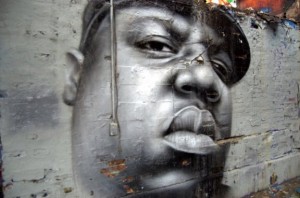 You think there should be more encouragement of this type of work, especially in places where there are higher crime?
You think there should be more encouragement of this type of work, especially in places where there are higher crime?
I wouldn’t even say higher crime. That whole broken window theory where once one window is broken, the whole neighborhood goes down… 5 Pointz is graffiti top to bottom. The neighborhood has a lot less graffiti than other neighborhoods. I would like a lot of my neighbors to have a graffiti-clean environment. I let people know that if you want to paint the walls that’s fine, but you can’t go writing in the neighborhoods around it. For the most part, everyone obeys the rules. Respect. All kids should have access to be able to paint these walls. It allows you to persevere your artistic abilities. Before I came to this place, when it was Fun Factory and not 5 Pointz, I was able to do my name and that was it. Now, with a building like this, it pushed my craft. I can do a whole background with a scene. It’s good exposure. It can help artists get work.
Sure. So how does someone actually get to paint on the wall?
They just come down, show an example of their work, and then they paint. If they come from out of town, they usually email me first, at which time, I tell them what they have to do. If they come on weekdays, they have to make an appointment. Whether you never painted at all or you are a professional, you still get a wall space.
You seem to be rescuing graffiti from the ground up. But some people say that assigning graffiti defeats the entire purpose of it.
5 Pointz is aerosol art, the use of a spraycan to produce artwork. It’s related to street tagging, but it’s not the same. You could do a piece illegally, and it would be considered vandalism, or you could do a piece legally, and it would be considered aerosol art. The only thing is, doing it legally, you’re not getting the adrenaline rush of doing it illegally. The idea is a different type of adrenaline rush for pushing yourself, and taking it to another level. I’m not saying it’s for everybody. If people like to do vandalism, then go do vandalism. If people like to have a place where they dont’ have to look their shoulder to create a mural and enjoy themselves, then come to 5 Pointz.
Now it’s interesting you say that. Earlier you were mentioning that you wanted a cleaner neighborhood that didn’t support vandalism.
No, out of respect for our neighbors that don’t want it, I try to keep the surrounding businesses clean. I do ask writers not to write in the neighborhood out of respect.
Mmm hmm.
We have our walls, we have our buildings. Don’t crap what you eat. Don’t destroy the surrounding area when you have a place to write. And the businesses… I try to keep clean… like 2,3,4 blocks away, I ask them not to do it.
So now that people have attached a face to your tag, Meres One, do people regard you differently when they actually see you and know that you’re a curator, you know, Oooh, there’s Meres One, careful!
The bottom line is this: regardless of who I am or what I am, I’m just a regular person, just another artist. I try to show everyone equal respect that I want them to show me, and that’s it. I mean, some people look up to me as a role model. Some people don’t appreciate what I do. I don’t expect everyone to love me, but respect me for what I do and I’ll respect you for what you do.
Awesome. When do you expect the museum to be up and running?
It’s going to take a couple of years. The good thing is that I have a PR rep. She’s a hard worker. I just linked up with a grant writing company that presented us with a contract and a package deal. I have to have that looked over by a lawyer, and hopefully, we can move forward from there. I don’t want to be too commercialized but yet, it has to be somewhat in a sense commercialized. I want it to maintain its authenticity. I know a lot of people that see dollar signs… I’m definitely not in it for the dollars. It’s an art form, and it’s recognized a lot more all over the world than in New York, which is a shame, considering that it was kind of raised in New York.
Sure. Let’s end on that.
Actually now, we got our website up. We’re going to have a documentary and a book, as well as quick moving DVD. Those are just some of the projects in the works. The high stuff on the buildings is going to have to all be redone because the repairs are pretty much destroying a lot of the murals. There’s a lot of work ahead of us.
Thank you for your time.
Bye.
***
Higher quality pictures can be found here
Higher quality pictures can be found here
admin graffiti
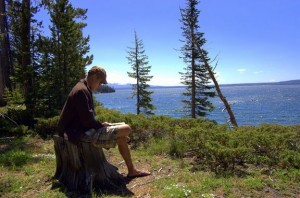
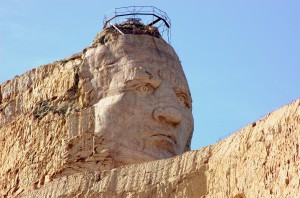 If you’re not from the Mid-West, chances are that you have never heard of the Crazy Horse Memorial. This massive monument is dedicated to Crazy Horse, a doughty warrior of the Oglala Lakota tribe. It is carved from the Thunderhead Mountain, a seventeen mile drive from Mount Rushmore. It is of epic proportions – when finished, it will become the world’s largest statue at 563 feet high and 641 feet long. To put this in perspective, the statue will be taller than the Giza Pyramids and the head of Crazy Horse will encompass an area greater than all of Mount Rushmore.
If you’re not from the Mid-West, chances are that you have never heard of the Crazy Horse Memorial. This massive monument is dedicated to Crazy Horse, a doughty warrior of the Oglala Lakota tribe. It is carved from the Thunderhead Mountain, a seventeen mile drive from Mount Rushmore. It is of epic proportions – when finished, it will become the world’s largest statue at 563 feet high and 641 feet long. To put this in perspective, the statue will be taller than the Giza Pyramids and the head of Crazy Horse will encompass an area greater than all of Mount Rushmore. But the truly amazing thing here is not how massive the monument is, but how sculptor Korczak Ziółkowski dedicated 34 years of his life from 1948 to his death in 1982 to this project. In 1947, he moved to South Dakota, built a log cabin at the the present Thunderhead Mountain site, and started blasting away millions of tons of rock. Along the way, he married, fathered ten children, and grew a beard reminiscent of Rip Van Winkle. He endured four spinal operations, heart bypass surgery, and countless broken bones but nonetheless, stayed course and continued working on the memorial. Because he had the foresight to know that it would never be finished within his lifetime, he incorporated his children to help him. Today, Korczak is buried at the base of the mountain and his surviving wife, Ruth Ziolkowski, manages the Crazy Horse Memorial Foundation while seven of his ten children continue working on this project.
But the truly amazing thing here is not how massive the monument is, but how sculptor Korczak Ziółkowski dedicated 34 years of his life from 1948 to his death in 1982 to this project. In 1947, he moved to South Dakota, built a log cabin at the the present Thunderhead Mountain site, and started blasting away millions of tons of rock. Along the way, he married, fathered ten children, and grew a beard reminiscent of Rip Van Winkle. He endured four spinal operations, heart bypass surgery, and countless broken bones but nonetheless, stayed course and continued working on the memorial. Because he had the foresight to know that it would never be finished within his lifetime, he incorporated his children to help him. Today, Korczak is buried at the base of the mountain and his surviving wife, Ruth Ziolkowski, manages the Crazy Horse Memorial Foundation while seven of his ten children continue working on this project.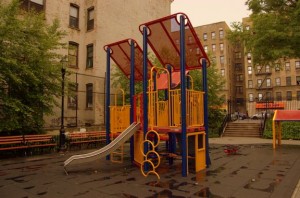

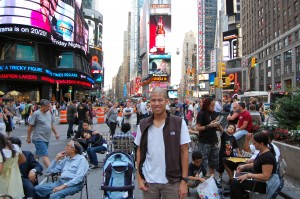
 5 Pointz in Queens, NY is the mecca of graffiti. Coruscating murals decorate nearly every square inch of the building. Forget what the travel books say – this is definitely one of the top ten places to visit in NYC.
5 Pointz in Queens, NY is the mecca of graffiti. Coruscating murals decorate nearly every square inch of the building. Forget what the travel books say – this is definitely one of the top ten places to visit in NYC. Tell us a little bit about the background of the 5 Pointz.
Tell us a little bit about the background of the 5 Pointz. You think there should be more encouragement of this type of work, especially in places where there are higher crime?
You think there should be more encouragement of this type of work, especially in places where there are higher crime?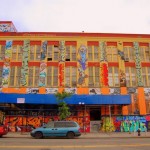
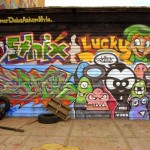
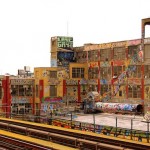
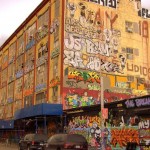
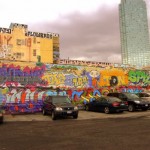

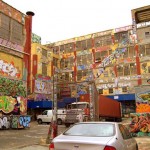

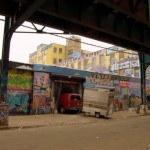
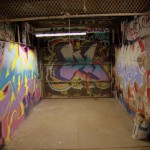

 it and get the word out!
it and get the word out!